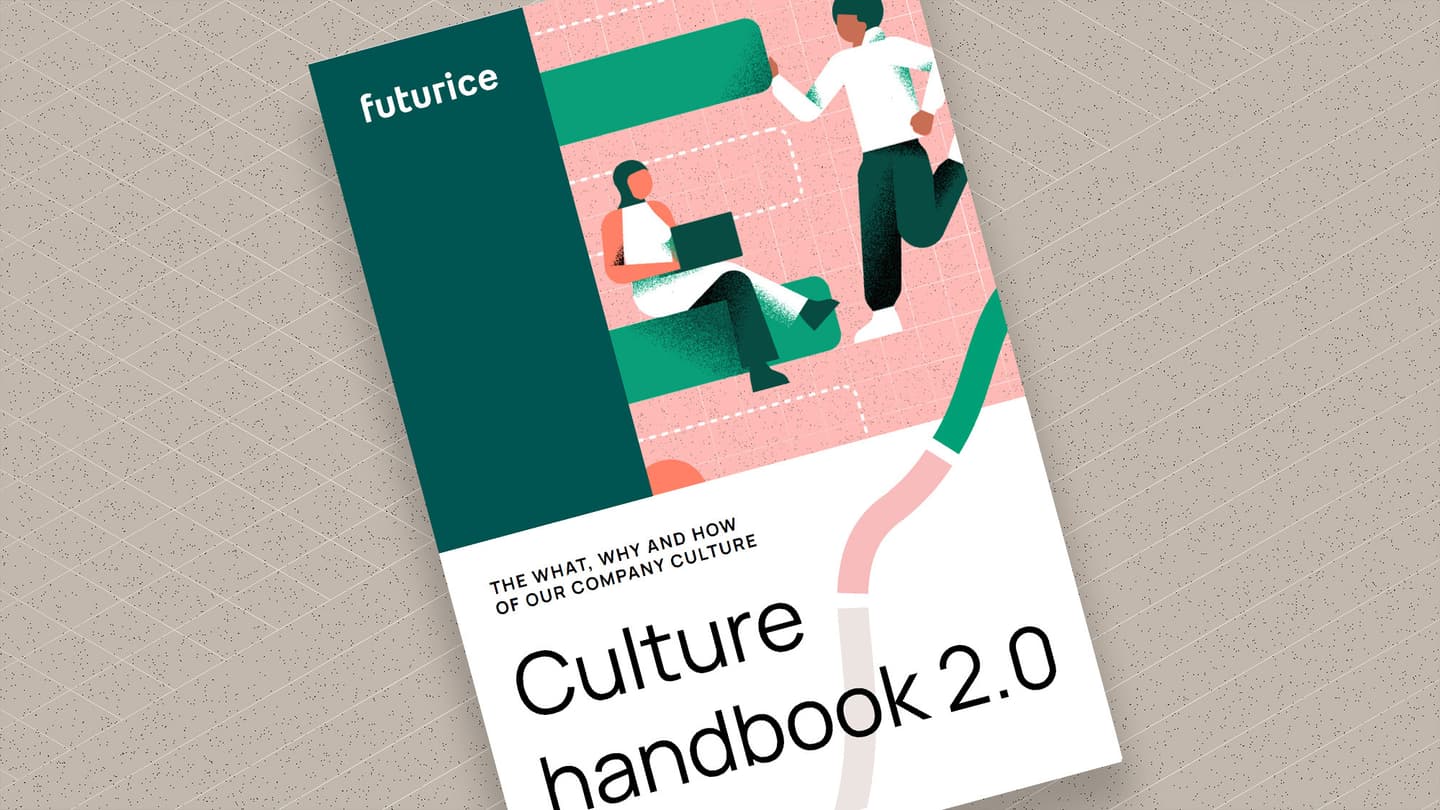Introducing the Futurice culture handbook 2.0
The Futurice culture is built on a strong foundation of values – care, trust, transparency, and continuous improvement. They are the cornerstones of what Futurice is and how we work in practice. Our newly released Culture handbook 2.0 offers an in-depth overview of the various different elements of our culture, complete with numerous examples and personal stories from Futuriceans.

The what, why and how of our company culture
The Futurice culture handbook explains the most important elements of our culture as well as the principles behind them, and uses real-life examples to show how they translate into practice and the way we work. The book gives a voice to numerous Futuriceans representing all our different sites, competences, levels of seniority and walks of life, and let them tell how they experience the Futurice culture in their daily work.
As you’ve probably guessed from the “2.0” in the name, the Futurice culture handbook 2.0 is not the first of its kind. Our first Culture handbook was published in early 2018, and it became quite popular within the company, and even beyond.
But our culture is a living and breathing thing that evolves constantly. The basic elements of our culture – the values and principles behind our decision-making process – remain unchanged, but the ways in which they manifest in our everyday lives had evolved. We also realized that we had adopted several new and extremely important cultural elements that were not covered by the first edition at all.
In order to paint a more up-to-date picture of our culture, we also wanted to refresh the stories featured in the first version and include more recent examples that more of our people could relate to and personally remember having been part of. And so we decided that it was time for a new culture handbook.
The work for this new edition of our Culture handbook started in early 2022 by inviting people to share their experiences and views on Futurice in a series of fireside chats across our different offices, as well as with the help of different collaborative tools. Our purpose was to create a real grassroots level view of what Futurice looks like, and we felt that collecting meaningful stories across the company would be the best way to approach that. We called this project FutuFolklore, as we felt that the fables and stories that get passed on were the ones we wanted to capture the most. Many of the stories originally collected as part of the FutuFolklore project are now featured in the Culture handbook 2.0.
Copy with pride
Our Culture handbook was written first and foremost for Futuriceans, whether it’s their first week or third decade in the company. That said, we also recognise the value in sharing how we do things with the rest of the world (in line with our values, particularly those of transparency and continuous improvement), which is why we wanted to make the handbook available to anyone interested in learning about our culture, taking notes and adopting our practices into their organization.
The handbook is published under the Creative Commons CC BY-SA 4.0 license, so feel free to quote and copy with pride, as long as you credit us and mention the source when you spread the word.
 Heidi PechAlumni
Heidi PechAlumni

